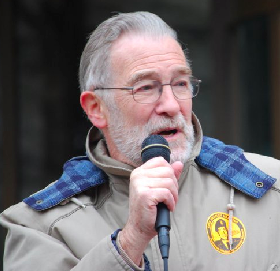This piece was reprinted by OpEd News with permission or license. It may not be reproduced in any form without permission or license from the source.
On Aug. 2, 1964, an intercepted message ordered North Vietnamese torpedo boats to attack the Maddox. The destroyer was alerted and raced out to sea beyond reach of the torpedoes, three of which were fired in vain at the destroyer's stern. The Maddox's captain suggested that the rest of his mission be called off, but the Pentagon refused. And still more commando raids were launched on Aug. 3, shelling for the first time targets on the mainland, not just the offshore islands.
Early on Aug. 4, the Maddox captain cabled his superiors that the North Vietnamese believed his patrol to be directly involved with the commando raids and shelling. That evening at 7:15 (Vietnam time) the Pentagon alerted the Maddox to intercepted messages indicating that another attack by patrol boats was imminent.
What followed was panic and confusion. There was a score of reports of torpedo and other hostile attacks, but no damage and growing uncertainty as to whether any attack actually took place. McNamara was told that "freak radar echoes" were misinterpreted by "young fellows" manning the sonar, who were "apt to say any noise is a torpedo."
This did not prevent McNamara from testifying to Congress two days later that there was "unequivocal proof" of a new attack. And based largely on that, Congress passed the Tonkin Gulf resolution allowing Johnson to escalate the war with intense aerial bombardments and the dispatch of more than a half million U.S. troops, 58,000 who would die along with estimates of several million Vietnamese and other people of Indochina.
Meanwhile, in "the Bowels"
However, by the afternoon of Aug. 4, 1964, the CIA's expert analyst on North Vietnam (let's call him "Tom") had concluded that probably no one had fired on the U.S. ships. He included a paragraph to that effect in the item he wrote for the Current Intelligence Bulletin, which would be wired to the White House and other key agencies and appear in print the next morning.
And then something unique happened. The Director of the Office of Current Intelligence, a very senior officer whom Tom had never before seen, descended into the bowels of the agency to order the paragraph deleted. He explained: "We're not going to tell LBJ that now. He has already decided to bomb North Vietnam. We have to keep our lines open to the White House."
"Tom" later bemoaned -- quite rightly: "What do we need open lines for, if we're not going to use them, and use them to tell the truth?"
The late Ray S. Cline, who as Deputy Director for Intelligence was the current-intelligence director's boss at the time of the Tonkin Gulf incident, said he was "very sure" that no attack took place on Aug. 4. He suggested that McNamara had shown the President unevaluated signals intelligence that referred to the (real) earlier attack on Aug. 2 rather than the non-event on the 4th. There was no sign of remorse on Cline's part that he didn't step in and make sure the President was told the truth.
Though we in the bowels of the agency knew there was no Aug. 4 attack -- and so did some of our superiors -- everyone also knew, as did McNamara, that President Johnson was lusting for a pretext to strike the North and escalate the war. And, like B'rer Rabbit, nobody said nothin'.
Let's hope that, this time on Syria, at least one or two senior intelligence or policy officials will find a way to get the truth out -- heeding their own conscience and oath to support and defend the Constitution -- rather than succumb to the ever-present temptation to give priority to being part of the President's "team."
(Note: You can view every article as one long page if you sign up as an Advocate Member, or higher).





